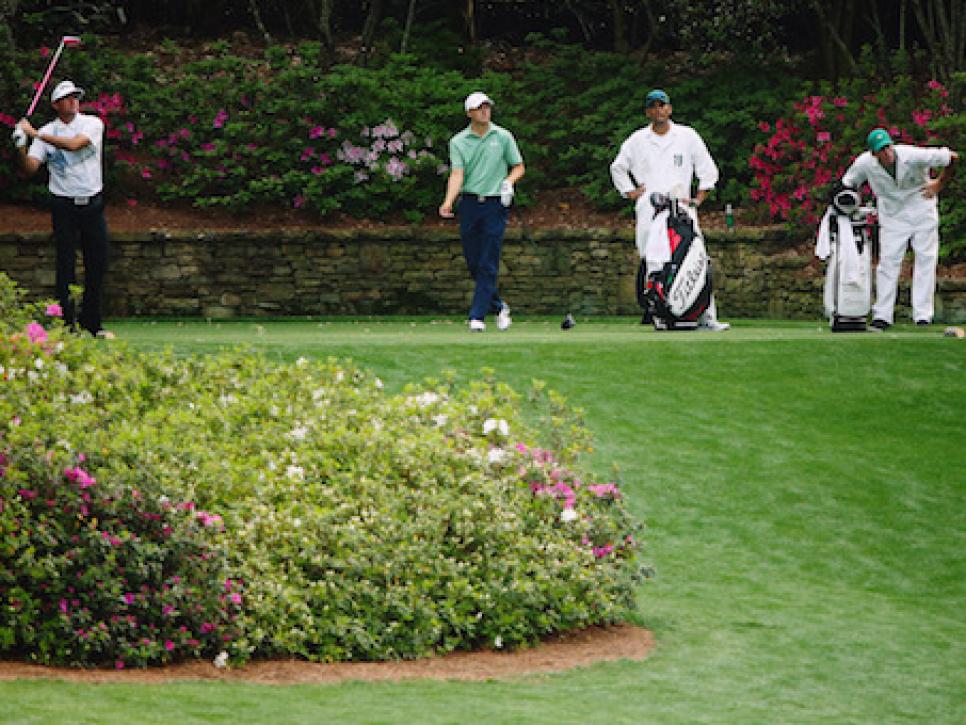The Loop
How He Hit That: Bubba Watson's curveball driver dagger
By Matthew Rudy
The shot that won the Masters for Bubba Watson wasn't the four-inch tap in on the last hole. It was a 360-yard tree-skimming parabola off the 13th tee. Watson had just taken a three-shot lead over Jordan Spieth, and the creek running alongside the 13th (and in front of the green) was probably only thing that could keep Watson from a second coat fitting.

Watson could have played it safe and stayed to the right side of the hole, but he hit his best -- and most aggressive -- tee shot of the week, dramatically cutting the dogleg and ending up 144 yards from the flag, in the middle of the fairway. Spieth would later say that when the ball came off the face of Watson's driver, it looked like was headed out of bounds 70 yards left of the hole. Watson hit a wedge safely onto the green, made par and sucked all the drama out of the back nine. He cruised to a three-shot victory.
"The shots he sees are amazing," says Top 50 Teacher Kevin Weeks. "The two most famous ones he's hit -- the shot out of the trees in the playoff in 2012 and this tee shot -- are amazing not just because he was able to make the ball curve so much, but because he was willing to hit those shots in such high-pressure situations. But that's the way he plays golf every day. Those shots are no different than what you see from him day in and day out."
It should come as no surprise that Watson doesn't fade the ball in the way most Tour players do. "Bubba instinctively knows how to make it curve," says Weeks. "It's a face and path relationship. To make a ball fade, the face is open to the path. Most players set it up with their body and make a similar swing. Bubba does it all with his hands. He has an incredible feel for the clubface."
Weeks says there's a method to Watson's curveballs. By playing such a pronounced fade with the driver, Watson is able to double the effective size of his target area. "When you hit it as hard as he is, you're giving yourself a 30-yard target when you aim at the edge of the right rough and let it cut instead of a 15-yard target in the middle of the fairway with a relatively straight ball," says Weeks. "It's something the average guy should be doing on every hole with his driver. Aim to account for your predominant ball flight and give yourself more room."
Almost as distinctive as Watson's heavily curving tee shots is his unorthodox footwork through impact. His rear foot comes off the ground, and he shuffles his feet so that he ends up standing facing the target. "It might look like he's not in balance, but the ball is gone by the time all that stuff is happening," says Weeks. "Before that, his swing looks a lot like Jack Nicklaus' in his prime, but from the other side of the ball. He makes a huge turn and has those high hands with a lot of wrist cock. He's a tall guy with long arms, and he has a long, arcing swing. His hand action is wonderful -- like a wrist shot in hockey. He has a ton of club head speed, but he also hits it in the center of the face every time. You can have lots of speed, but it only translates into distance if you're hitting it flush."
Watson found his swing -- and his strategy -- with no help from a coach. He's never had a lesson, and he doesn't work on mechanics in the classic sense. "He just goes and hits balls until he feels it," says Weeks. "He's a lot like Sam Snead. If Snead was hitting it bad, he'd go hit balls barefoot. If he was still hitting it bad, he'd go hit balls barefoot in the mud. With Bubba, most of the time he plays bad, it's mental. Something is distracting him. He wasn't distracted this week."